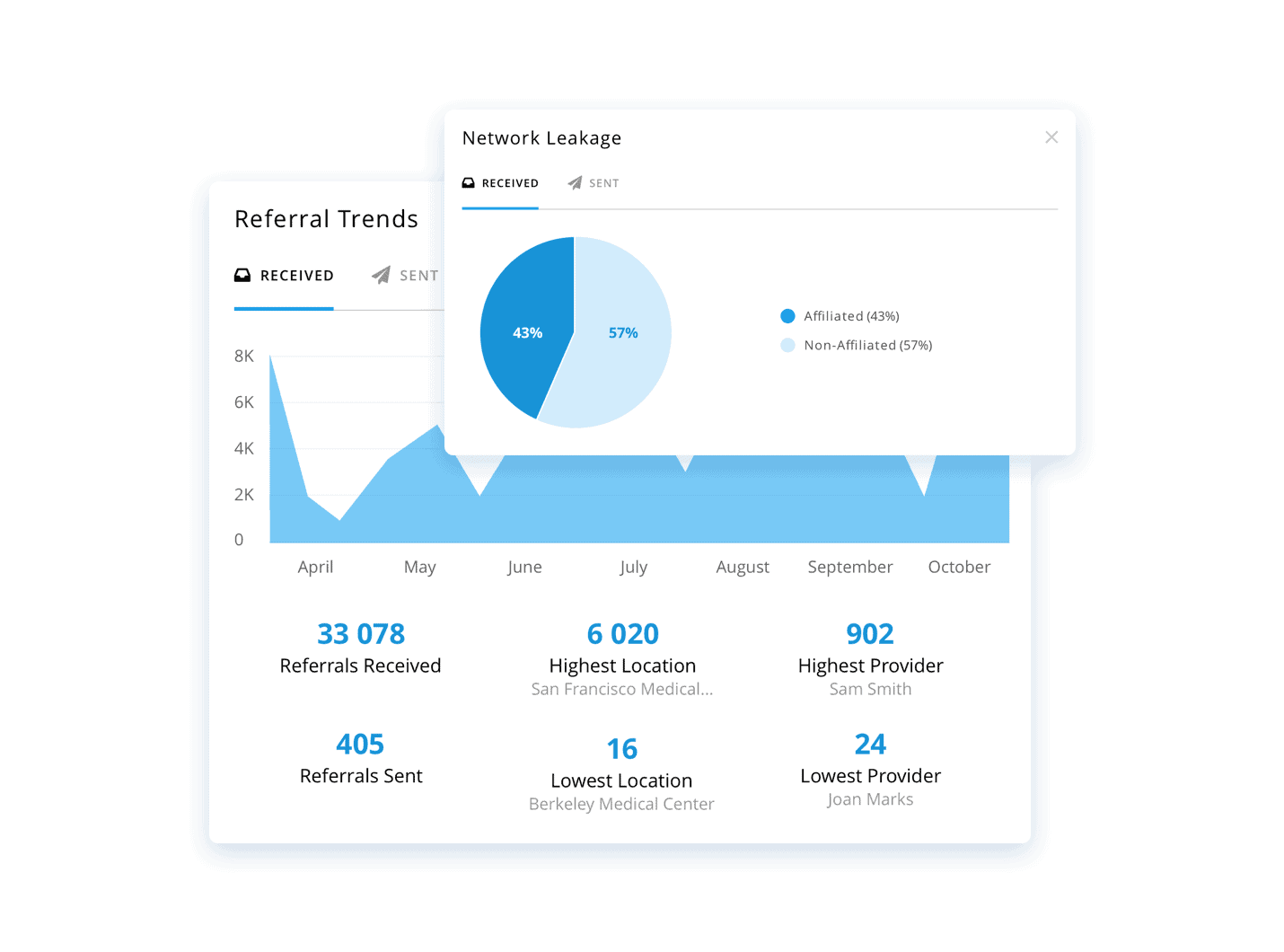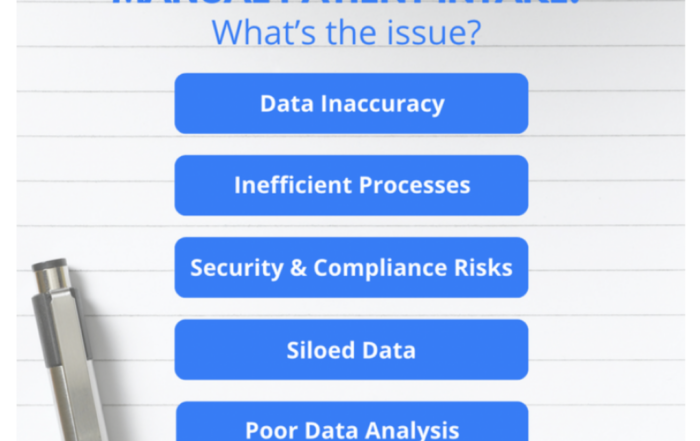Patient referrals are an integral revenue generator for every hospital, clinic, and caregiver. Yet most facilities require the patient to hand-deliver referrals and do not adequately track the originating provider of said referral. This leads to many issues including reduced coordination of care, loss of revenue, and a poor patient experience.
So what are the main problems?
1. Excessive Specialization Options
Over the last 40 years, specialties and sub-specialties for doctors have dramatically increased from 11 in 1970 to over 145 in 2014. Primary care providers have to spend more time learning about and managing these groups and stay up-to-date with what types of treatment options are available to their patients.
2. Referral Rates have Increased
Physician referral rates have been steadily increasing but only 35-45% of referrals for adult inpatient care, as measured by revenue, go to a partner hospital. Hospital organizations need to maintain, capture and improve volumes in order to build revenue and remain competitive. With the advent of ACO’s, ensuring patients stay within the network has become even more critical to ensure the ACO’s ability to capture revenue.
So How to Improve Referral Leakage?
Reform your paper-based referral first
“Patient experience” is a buzzword these days. Driven by the philosophy of engaging patients throughout the entire service, an increasing number of healthcare providers are investing heavily in direct-to-patient marketing campaigns. Indeed, in the era of health 2.0, hospitals and physicians have all become marketers in their own right.
Create a Tweeter account (Pro-Tip), put up a Facebook community page (Pro-Tip), or open an educational blog (Pro-Tip) to interact with your patients and showcase your support for the movement toward transparent and value-based healthcare; that’s easy.
RECENT ARTICLE:
Learn more about how tracking referrals properly can reduce referral leakage and increase revenues on a recent article titled, five analytical data approaches to reduce referral leakage and increase referral volume

Learn more about how to track patient referral leakage with referralMD’s robust reporting package.
So how do you stand out?
Some hospitals or clinics have a bit more bragging rights about their rankings and awards than others, so let’s put those achievements up on the website and splurge some money on the TV ads talking about the excellent quality of service, and the ideal work environment employees are proud of.
But do vague statements like “excellent quality of service” and “best place to work for” truly resonate with a patient?
Probably not. Patients are more concerned about how well they’ll be treated, how long they’ll have to sit in the waiting room, how accurate their diagnosis is and whether they’ll get adequate support to pay the bill.
A wake-up call to any hospital that aspires to increase foot traffic and get more patients: Before going any further with the advertising blitz and blowing your patients away, take a step back and redesign the marketing strategy. (Pro-Tip)
Need more patient referrals? Read a great patient referral guide here.
Improve the patient experience
It is true that patient experience is crucial to positive word-of-mouth and branding. However, when it comes to choosing the right hospital, patients still make decisions based on suggestions from their primary care physicians such as family practitioners.
The bad news is then too many healthcare providers have spent too much on targeting patients for an ROI that’s mediocre at best. On the flip side, however, opportunities abound: Refocus marketing efforts on physician networks, and healthcare providers may achieve stellar results in growing patient volume at a moderate and manageable cost. The question is: How?
Simple answer: patient referral.
Why electronic patient referrals (not the e-fax)
The patient referral is a huge driver of hospital traffic.
Despite the pivotal role patient referral plays in driving foot traffic to a hospital, the operational practices are lagging behind. When a patient is referred to a specialist for further investigation of his medical condition, the primary care physician needs to report to the specialist background information on the patient’s medical history, referral reasons, and testing that has been done.
 Under the current paper-based referral system, referring physicians have to spend hours or even days filing triplicate forms to specialists, which causes a huge drain on both time and resources.
Under the current paper-based referral system, referring physicians have to spend hours or even days filing triplicate forms to specialists, which causes a huge drain on both time and resources.
Even worse, due to its one-way conversation nature, paper-based referral allows for no communication between referring physicians and specialists, resulting in disconnected patient care. Patients pay fees to receive services with little coordination between clinical practitioners.
Although still in its infancy a few years ago, the electronic patient referral system is starting to catch on more recently and hold the promise of addressing the above challenges faced by paper referrals. As healthcare providers digitize their outbound marketing campaigns, they should seek to break up the silos between departments and get ready to welcome electronic patient referrals for a coordinated and holistic view of patient care management.
Below are 3 top reasons electronic referral systems will benefit the growth of patient volume:
1. The electronic referral system helps to define the work roles and reduce tort liability.
It is not uncommon for paper-based referral systems to raise concerns over the delineation of practitioners’ responsibilities or confusion about how much tests should be done at the primary care level before a patient is referred.

Rather than require referring physicians or providers to fill out paper forms and submit preliminary patient test results with inconsistent report qualities, the electronic referral system enables the co-creation of a referral agreement between a specialist and primary physician.
Utilizing a standardized referral template, referring physician will receive workup guidance or answers to clinical questions from specialists more timely. On the other hand, specialists will gain greater control over the quality of patient data submission to minimize human errors such as mistreatment, over-treatment or duplicate of testing. Patients will be referred only when necessary.
2. Electronic referral is conducive to streamlining the workflow, improving efficiency and containing healthcare cost.
 Unlike paper referral, electronic referral drives a two-street back-and-forth dialog between referring physician and the subspecialty reviewer. The majority of electronic referral platforms have APIs compatible with hospitals’ proprietary health information databases for seamless integration of medical records.
Unlike paper referral, electronic referral drives a two-street back-and-forth dialog between referring physician and the subspecialty reviewer. The majority of electronic referral platforms have APIs compatible with hospitals’ proprietary health information databases for seamless integration of medical records.
Administrative and clinical information data will be transferred along the way, and outbound referrals can be tracked by primary physicians as well. Referring providers will participate more actively in patients’ treatment decisions; specialists will be better able to triage and allocate limited appointments based on the urgency of patients’ conditions.
3. Patient experience will be improved with the referral digitization.
The rational allocation of resources in both non-urgent and urgent care will shorten the patient wait time and increase clinical access to appointments. Delays in treatment or diagnosis will be reduced, diagnostic reporting will be more effective, and miscommunication or misrepresentation of information will be less likely to happen. Overall clinical outcomes will be improved, leading to greater patient satisfaction.
When a patient takes ownership of his positive experience and promotes a healthcare brand within his own online communities, no heavy lifting is required of the health service provider, but the market budget is stretched.
In the online healthcare marketing space where all marketers are competing for the core real estate, aiming for a high search share impression and directing traffic to your website is still of great value. Nonetheless, before making the final pitch to your patients, remember to seek a “moment-of-truth” about the population you’re about to target and try to grow a solid base of physicians as your brand advocates. Use electronic patient referral as a starting point of true quality care and reveal to physicians the unique value they’ll receive by partnering with you.
Let your partner physicians do the rest of patient marketing for you.
As promised here is an infographic describing the issues and solutions.















